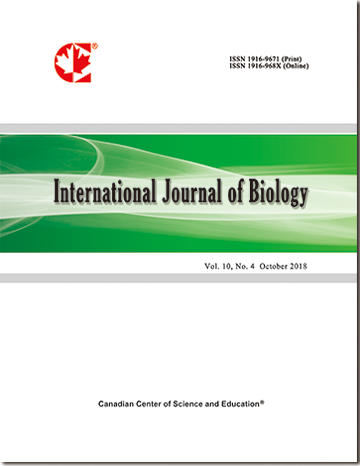Effect of Sulphaphenazole on Pathogenic Microorganism Klebsiella aerogenes
- Neeta Surve
- Uttamkumar Bagde
Abstract
The inhibitory action of Sulphaphenazole on pure culture of Klebsiella aerogenes was studied with emphasis on
the mode of action of the drug. Sensitivity was studied by broth dilution method and by Hi-Comb Method. The
Minimum Inhibitory Concentration (MIC) of Sulphaphenazole determined by broth dilution method and
Hi-Comb Method against Klebsiella aerogenes was 30 ?g/ml. Sulphaphenazole induced changes in bacteria
which interfered with cell wall synthesis revealing morphological alterations that was shown by Scanning
Electron Microscopy (SEM). The present studies were undertaken to investigate the presence and characteristic
alterations in surface morphology of cells resulting from the action of Sulphaphenazole known to interfere with
intracellular protein synthesis. The morphological abnormalities observed may be surface reflections of specific
abnormalities of intracellular protein synthesis or may represent a final common pathway of drug-induced injury
at many sites within or on bacterial cells. As the activity of dehydrogenases was inhibited by Sulphaphenazole,
cells were incapable of oxidizing substrate. It resulted in limited supply of energy rich compounds such as ATP
that affected the synthesis of macromolecules. Ultimately multiplication and growth of the organism got ceased.
- Full Text:
 PDF
PDF
- DOI:10.5539/ijb.v3n2p106
Journal Metrics
h-index (December 2021 ): 37
i10-index (December 2021 ): 149
h5-index (December 2021 ): N/A
h5-median (December 2021 ): N/A
Index
- ACNP
- AGRICOLA
- BASE (Bielefeld Academic Search Engine)
- CAB Abstracts
- CiteFactor
- CNKI Scholar
- CrossRef
- DTU Library
- Elektronische Zeitschriftenbibliothek (EZB)
- Excellence in Research for Australia (ERA)
- Google Scholar
- Infotrieve
- LIVIVO (ZB MED)
- LOCKSS
- Max Planck Institutes
- MIAR
- PKP Open Archives Harvester
- Qualis/CAPES
- ResearchGate
- ROAD
- SafetyLit
- SHERPA/RoMEO
- Technische Informationsbibliothek (TIB)
- Universe Digital Library
- WorldCat
Contact
- Ryan JonesEditorial Assistant
- ijb@ccsenet.org
